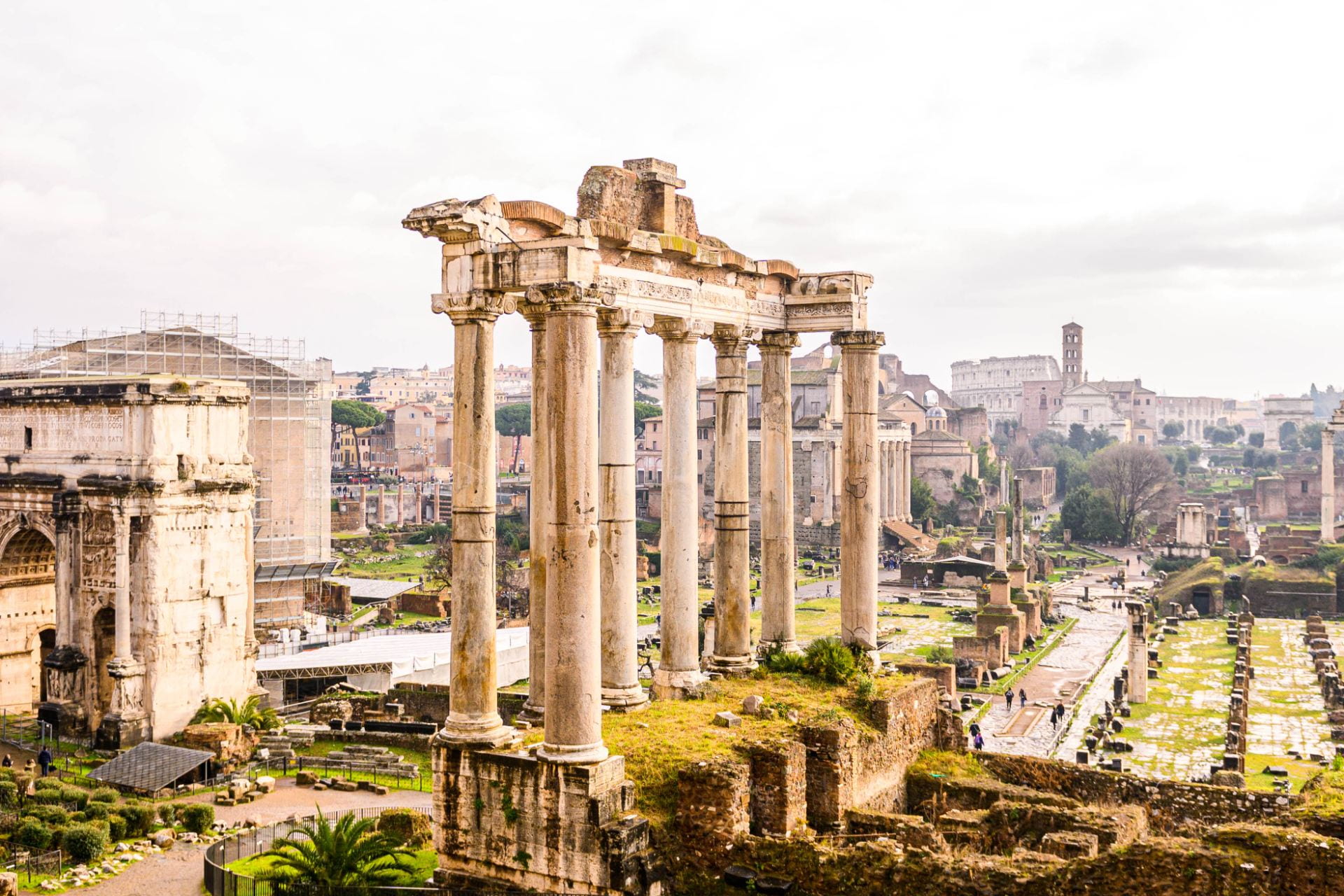By Savanna Lim
I love wandering around Rome. Aside from all the history that lives within the walls of the city centre, the ways the small neighbourhood nooks and crannies are designed make one feel as though they are in a maze, constantly searching for the next secret or surprise, as if around the corner, something wonderful or magical is waiting to be found.
At times, when walking in the neighbourhood of Trastevere or Monti, I barely recognize where I am, as all the buildings reach the same heights, are painted in the same colour palette, and don the same types of doors. I discussed this phenomenon I was feeling with my drawing professor, Luca Padroni, as we sauntered our way through Piazza Navona. He then revealed that Piazza Navona, along with many other Roman neighbourhoods, was built with tiny sidewalks and winding roads which open up into grander streets to make the city seem more awesome, grander, and more daunting than it really was. What a use of design and architecture. On the other hand, another Roman street characteristic I have noticed is that many main roads are extremely wide and exceedingly straight.
This was something I noticed after Professor Jan Gadeyne painstakingly explained to us in our Urban Topography class how much Romans enjoy putting everything, from buildings to roads, on a straight axis. Upon doing further research, I found out that this was because the Romans found it easiest and fastest to travel this way. For some reason, I had never thought about why the street system in cities like New York was designed so until I got to Rome. What is it about the urban fabric here that makes one think, makes one draw comparisons to other major cities? Then I wonder if I am actually stimulated by these streets, or if Eurocentrism has caused me to look at Rome through Rose-tinted lenses. I think it is a mix of both.

I love wandering around Rome. Everywhere I walk, I feel as though I am witnessing ancient architecture and experiencing history, my heels hitting the cobblestone gravel as I pass anonymous buildings of which I am sure have some historical significance. How does a city preserve its “magic” while modernizing? Rome feels both ancient and modern at the same time, with icons like the Colosseum being a mere stone’s throw away from zooming public trams. I think this mix of old and new is a lesson in historical preservation, planning, and architecture that everyone can admire. Even as I make my way out of the Roman “ring”, into places like San Lorenzo, I am pleasantly greeted by large sidewalks, people meandering, and surprisingly diverse eateries and stores. My favourite way of exploring a city is by walking it. While Rome is simply too large to walk around by foot, the public transportation (three different modes!) is reliable enough so that I can explore enough on foot without being exhausted. The busses and subways are pleasantly reliable. I have rather enjoyed going into peripheral, more residential neighbourhoods to see how different they are compared to the city centre. I have made some observations — though I am sure these will not be my last. The city center is overall remarkably walkable, even with the different modes of transit. In residential neighbourhoods, roads and streets have more parking and are wider than roads in the city center. In residential neighbourhoods, buildings are taller; various types of buildings (from the 20’s, 30’s, 60’s) line up along the same road, as opposed to the city center, where most building facades look very similar and fit the more “typical” look when one thinks of Europe.

The culture and energy of the city center is also vastly different from that of a Residential neighbourhood; the city center is more lively and chaotic, the residential neighbourhood more calm. In all honesty, I think I would hate living in a city as popular as Rome; even as a student, it bothers me more and more when tourists get in my way, blocking my wandering and walking . In New York City, at least the tourists seem spread out enough on the islands of Manhattan to Brooklyn; in Rome, only a small concentrated area is attractive to tourists, who gather and seep into its many crevices, like spilt water on a table cloth.

I love wandering around Rome. Despite the tourists and incessant ambulance noises, I feel as though I discover something new every day. I’ve learned how to adapt to the built environment here: I make eye contact with drivers before crossing the road, I avoid iconic landmarks (as Kevin Lynch would say) like Campo di Fiori, and I follow the flow of pedestrian traffic that has been so carefully designed for me. I love wandering around Rome, and I don’t think that will ever change.



